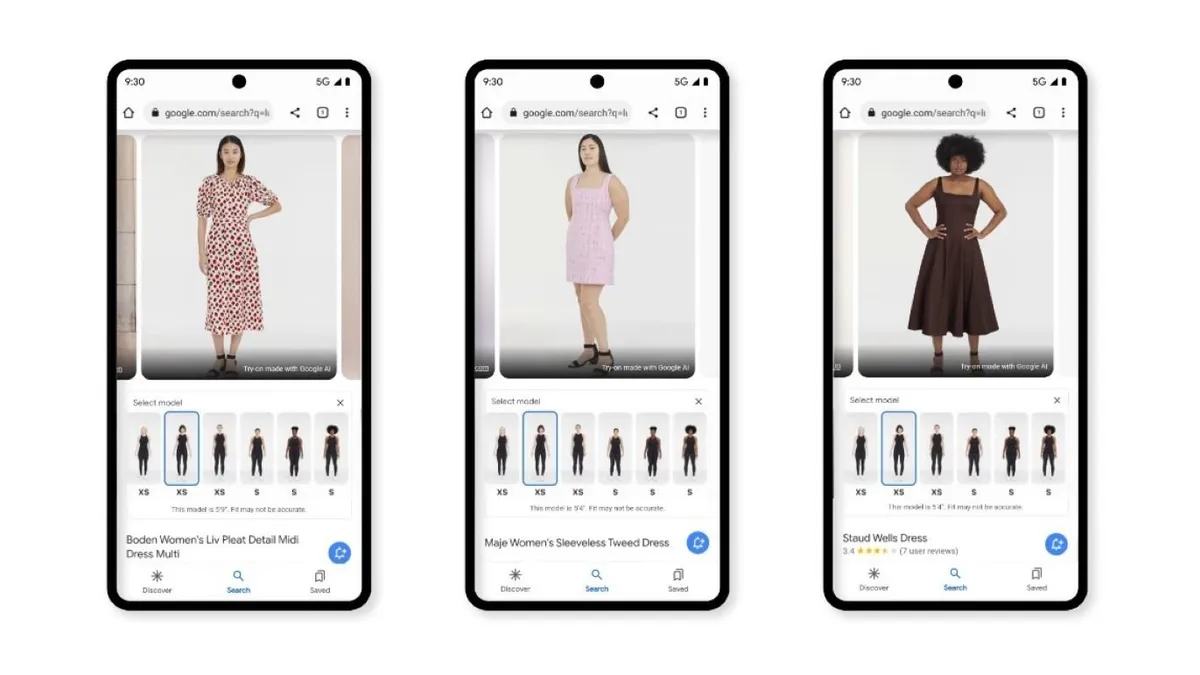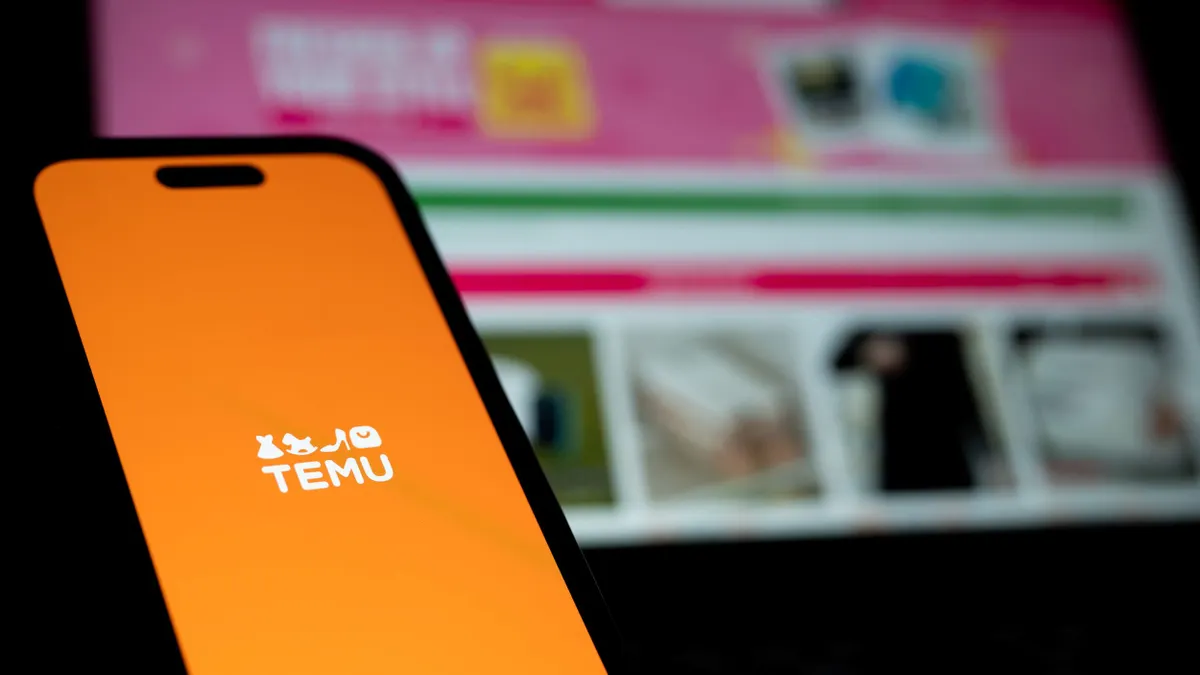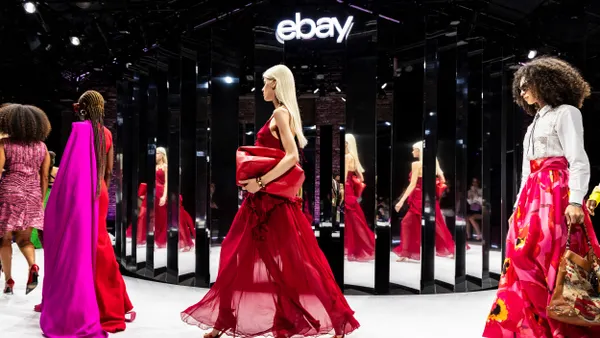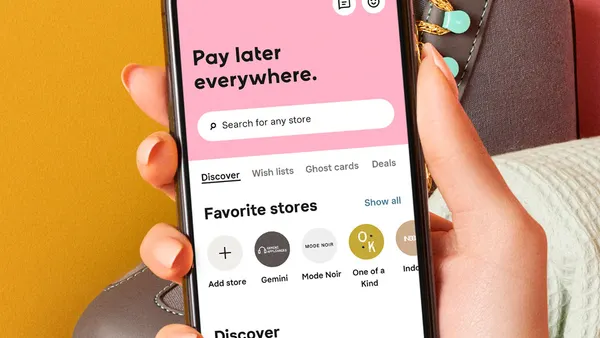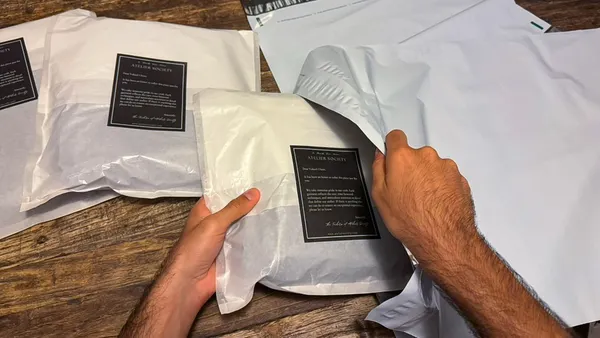Google Shopping has added dresses to its generative AI-enabled virtual try-on feature in the U.S., according to a Thursday announcement.
The move dovetails with the start of New York Fashion Week. Through a partnership with ready-to-wear label Simkhai, select dresses will be available for virtual try on and pre-order following the label’s Sept. 7 runway show, per the release.
Dresses are “one of the most-searched apparel categories” on the platform, Google Shopping said in the release. The expansion into the category follows last year’s introduction of virtual try-ons for men’s and women’s tops, plus enhanced algorithms to help shoppers more easily refine their apparel search parameters.
Google’s generative AI model manipulates an image of clothing and showcases the item on “a diverse set of real models, ranging in sizes from XXS-XXXL,” per the release. Users can choose a model that best aligns with their body, and click on a retailer’s site to buy the apparel.
Anthropologie, Everlane and H&M were among the brands included in Google Shopping’s virtual try-on launch last year. Those brands have been joined by “hundreds of brands across the web,” per the release, including Boden, Staud, Sandro and Maje.
When Google Shopping introduced its virtual tools last year, the company said 42% of online shoppers “don’t feel represented by images of models,” and 59% “feel dissatisfied with an item they shopped for online because it looked different on them than expected.”
The company said that since launching its tools, it’s discovered that virtual try-ons can benefit both shoppers and brands.
“Virtual try-on images on Search receive 60% more high-quality views, and on average, people try on clothes using four models per product,” Google said in Thursday’s release. “Shoppers are also more likely to visit a brand’s site after viewing virtual try-on images.”
Artificial reality shopping tools are becoming the new norm, according to Joe Kwong, head of business development at software firm Agora.
“Google's latest AI upgrades are pushing this trend even further, making online shopping more innovative and convenient,” Kwong said in an email. “The next big step for Google could be letting users suggest unique variations and send feedback to sellers or expand AR tech to link virtual try-ons with real-time motion to create an even more personalized and immersive experience.”



